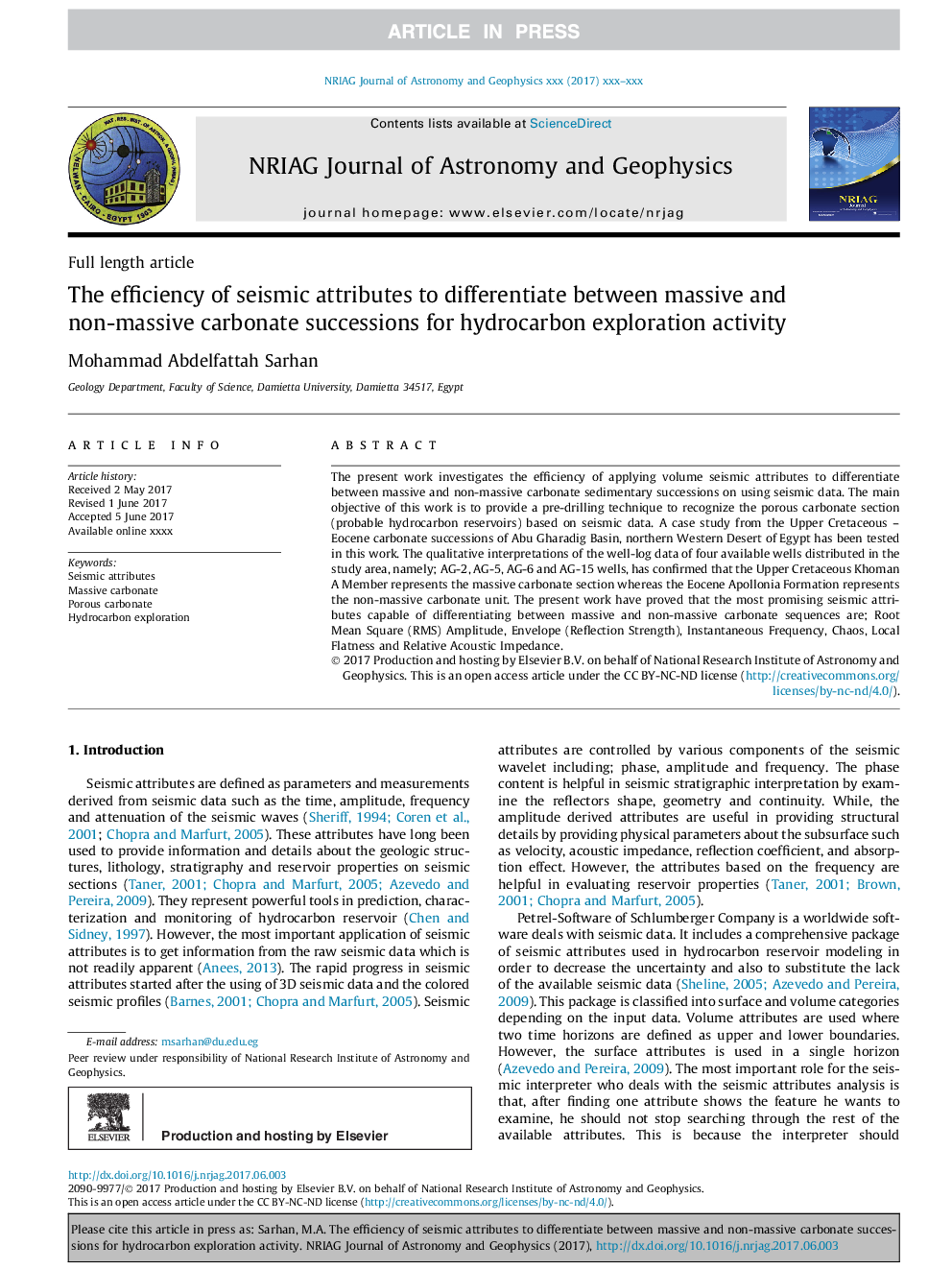| Article ID | Journal | Published Year | Pages | File Type |
|---|---|---|---|---|
| 8141644 | NRIAG Journal of Astronomy and Geophysics | 2017 | 15 Pages |
Abstract
The present work investigates the efficiency of applying volume seismic attributes to differentiate between massive and non-massive carbonate sedimentary successions on using seismic data. The main objective of this work is to provide a pre-drilling technique to recognize the porous carbonate section (probable hydrocarbon reservoirs) based on seismic data. A case study from the Upper Cretaceous - Eocene carbonate successions of Abu Gharadig Basin, northern Western Desert of Egypt has been tested in this work. The qualitative interpretations of the well-log data of four available wells distributed in the study area, namely; AG-2, AG-5, AG-6 and AG-15 wells, has confirmed that the Upper Cretaceous Khoman A Member represents the massive carbonate section whereas the Eocene Apollonia Formation represents the non-massive carbonate unit. The present work have proved that the most promising seismic attributes capable of differentiating between massive and non-massive carbonate sequences are; Root Mean Square (RMS) Amplitude, Envelope (Reflection Strength), Instantaneous Frequency, Chaos, Local Flatness and Relative Acoustic Impedance.
Related Topics
Physical Sciences and Engineering
Physics and Astronomy
Astronomy and Astrophysics
Authors
Mohammad Abdelfattah Sarhan,
